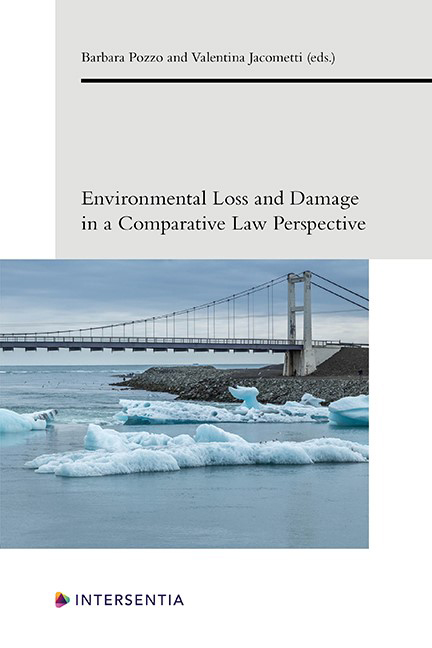Book contents
- Frontmatter
- Preface
- Contents
- List of Authors
- PART I LIABILITY FOR ENVIRONMENTAL HARM IN THE EU
- PART II PRIVATE AND CORPORATE ENVIRONMENTAL LIABILITY
- PART III THE ROLE OF CRIMINAL LIABILITY
- PART IV LEGAL TRANSPLANTS IN THE ENVIRONMENTAL FIELD: THE CASE OF ENVIRONMENTAL LIABILITY
- PART V STATE AND INTERNATIONAL ENVIRONMENTAL LIABILITY
- PART VI CLIMATE CHANGE LIABILITY
- PART VII LIABILITY, CLIMATE CHANGE AND NATURAL HAZARDS: THE ROLE OF INSURANCE
- PART VIII REAL COMPENSATION AND OFFSET REGIMES: THE STRATEGY OF “NO NET LOSS”
- About the Editors
Accumulation of Potentially Toxic Elements in Agricultural Soils
Published online by Cambridge University Press: 26 May 2021
- Frontmatter
- Preface
- Contents
- List of Authors
- PART I LIABILITY FOR ENVIRONMENTAL HARM IN THE EU
- PART II PRIVATE AND CORPORATE ENVIRONMENTAL LIABILITY
- PART III THE ROLE OF CRIMINAL LIABILITY
- PART IV LEGAL TRANSPLANTS IN THE ENVIRONMENTAL FIELD: THE CASE OF ENVIRONMENTAL LIABILITY
- PART V STATE AND INTERNATIONAL ENVIRONMENTAL LIABILITY
- PART VI CLIMATE CHANGE LIABILITY
- PART VII LIABILITY, CLIMATE CHANGE AND NATURAL HAZARDS: THE ROLE OF INSURANCE
- PART VIII REAL COMPENSATION AND OFFSET REGIMES: THE STRATEGY OF “NO NET LOSS”
- About the Editors
Summary
INTRODUCTION
Over recent decades, it has become evident that certain anthropogenic activities have drastically changed the composition and organisation of our soil, reducing its ability to function and generating a downward spiral in both organic matter (OM) and biodiversity. The increase in contamination, compaction, salinisation, floods and landslides, which soils have faced, has reduced the ability of soil to support life systems. With the world population predicted to reach 9.7 billion people by 2050, the pressure on soil is going to increase considerably, hence soil conservation is vital to achieving sustainability.
Although in 1996 the Royal Commission for Environmental Pollution (RCEP) acknowledged the need to protect and conserve the sustainability of soil, since then very little has been done to effectively prevent its degradation. Indeed, soil health has failed to capture both society's attention and politicians’ interests, which has led some academics to compare its situation to that of “the Cinderella of environmental media”, highlighting the lack of attention towards it and its weak legal protection. Moreover, at a global level, the promotion of soil health has repeatedly been overlooked by governments in comparison with other environmental concerns. This seems odd, as the need to maintain healthy soil was known as far back as 1500 BC, with the Vedas Sanskrit Scripture stating, “Upon this handful of soil our survival depends. Husband it and it will grow our food, our fuel and our shelter and surround us with beauty. Abuse it and the soil will collapse and die, taking humanity with it.” This acknowledges the underlining symbiotic relationship between nature and man, where if one suffers, the other suffers as well. Consequently, humanity must act on the need to re-address the value of nature and more specifically soil. There are, as one may suspect, a few hurdles preventing this from happening.
The 19th century development into the industrialised, self-centred, market- based economic model that instigated the neglect of the symbiotic relationship between man and nature that ancient wisdom emphasised. This economic model prioritises the need to exploit nature for short-term gains and immediate prosperity, with policy and legislation as its co-conspirator. This had led to an agricultural economy where the introduction of chemicals into the soil is a necessity to guarantee the viability of food production levels.
- Type
- Chapter
- Information
- Publisher: IntersentiaPrint publication year: 2021



